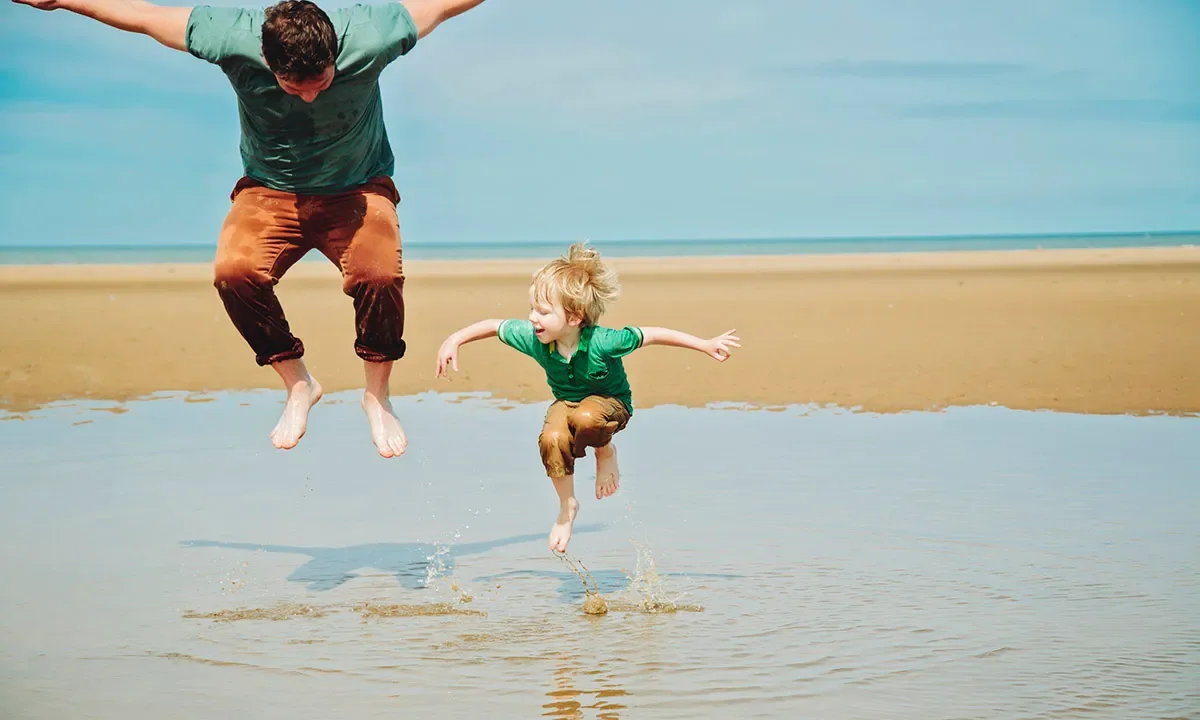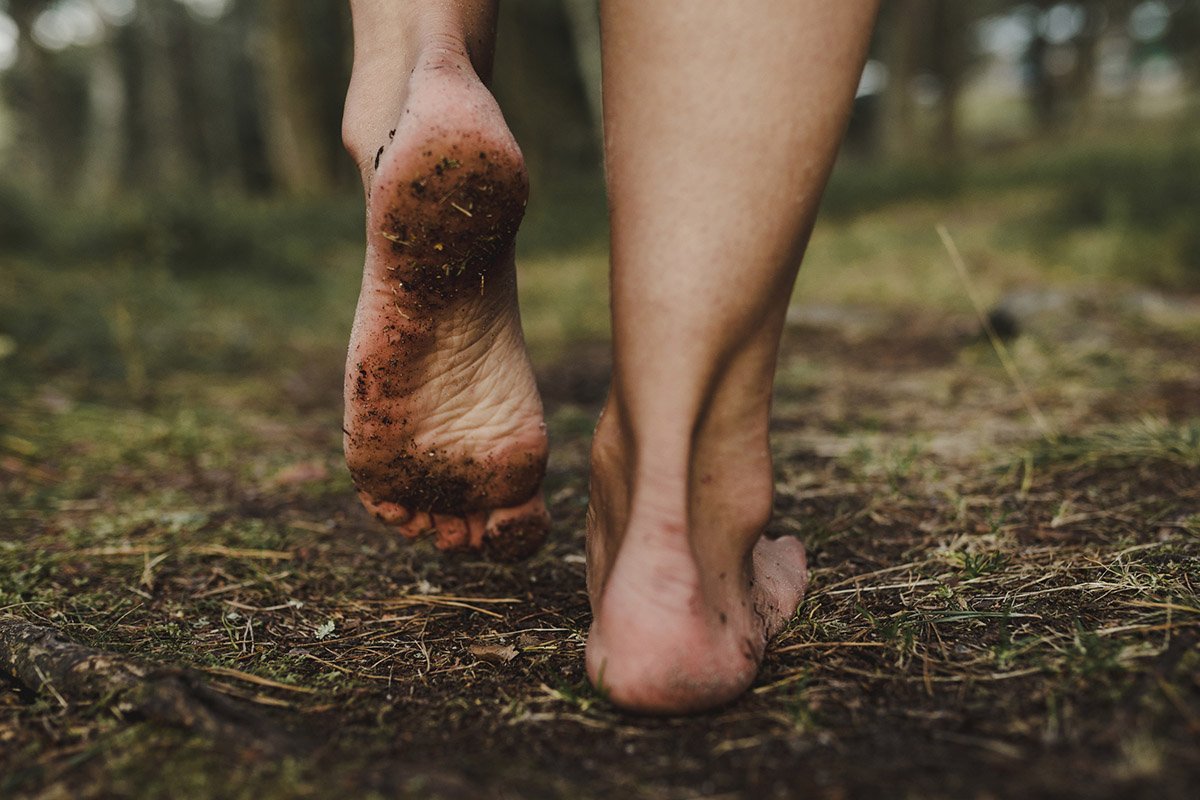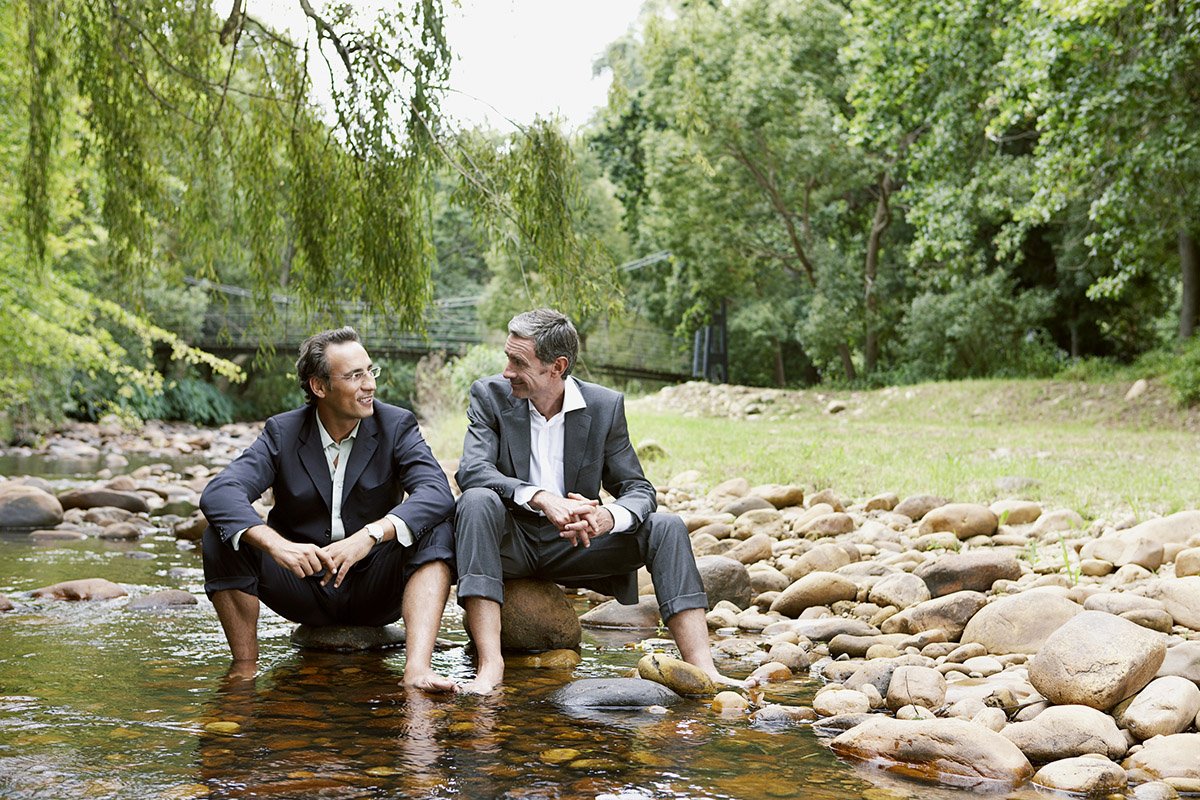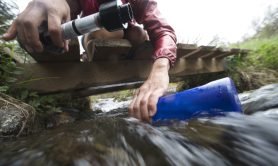

Most of us in modern society spend the majority of our days in rubber-soled shoes, trudging across indoor, man-made flooring. We don’t log hours in nature like generations past—and it could be contributing to a decline in overall health. Diabetes, autoimmune diseases, cardiovascular conditions, and certain cancers have all seen a significant rise in the last century, while anxiety, insomnia, and fatigue plague even more of the population.
But have you ever enjoyed an outdoor vacation where all your aches, anxieties, and ailments seemed to disappear for a few days? Sure, you’re more relaxed without the weight of work on your shoulders, but that swim in the lake or barefoot picnic might have something to do with it too. Whether you knew it or not, you were grounding.
What Is Grounding?

Grounding—also known as earthing—is an ancient practice that uses the electric charge of the earth’s surface to stabilize the body’s bioelectrical systems, which control a variety of internal functions. Essentially, it’s making direct skin contact with natural ground or water to restore the body to a state of homeostasis after dealing with the physical stresses of everyday life. It’s “electric nutrition” for the body and soul.
Dr. Derrick DeSilva, Jr., who has practiced internal medicine for more than 30 years, has seen grounding make a major impact on the health of his patients.
“Our body is under constant attack—inflammation, the prescription medicines we’re taking. We have too many of these bad ions that collect in our body,” he said in a recent interview. “When you take your shoes off and you walk on mother earth, you’re going to send all the bad ions out and all the good ions back in. Why? Lightning hits the earth 2,500 times a second. Lightning is constantly hitting the earth from all over the world, and that transformation of those ions into the ground through the water and into our bodies is extremely therapeutic.”
It might sound like too-good-to-be-true pseudoscience, but the research to back up this practice is robust.
“This is real science,” DeSilva said. “This is not voodoo.”
Dr. Stephen Sinatra, a pioneer in the study of grounding and its many benefits, has noted both long-term and “rapid effects achieved by what appears to be the body’s broad uptake and use of electrons received from Earth”—primarily linked to a significant decrease in inflammation.
In a 2017 grounding study, Sinatra and his team reported a nearly identical increase in diabetes cases as sales of synthetic-soled shoes soared starting in the 1950s. The discovery suggests a correlation between less time grounding and more inflammatory-related disease.
Benefits of Grounding

Grounding can promote healing and benefit systems throughout the entire body—and do so pretty quickly. These are the primary effects you could expect when you start earthing.
- Reduced inflammation and pain: Grounding can help alleviate both chronic inflammation from underlying conditions and acute inflammation due to injury. Swelling, heat, pain, and function can all improve, while your risk of developing new health issues decreases.
- Boosted immunity and healing: By reducing oxidative stress, earthing helps the body rapidly recover and remain healthier over time.
- Increased blood flow: Multiple studies have proven grounding can reduce blood viscosity, allowing for increased blood flow. This better circulation affects the entire body and reduces the risk of cardiovascular disease, in particular.
- Improved digestive function: By decreasing inflammation of the gut lining and increasing blood flow, grounding can help food break down more easily, minimize post-meal discomfort, and maximize nutrient absorption.
- Better rest: Normalized sleep is one of the most common benefits enjoyed when grounding. By improving circadian rhythm, it leads to deeper sleep and increased daytime alertness.
- Decreased stress: Grounding helps calm stress, improve mood, relax muscles, relieve tension, and ultimately regulate cortisol levels.
It’s also completely free. In an age of five-figure ice baths and pricey supplements, grounding provides a host of health benefits at no cost. You’ll also get a dose of free fresh air and the sunlight’s vitamin D during your outdoors grounding sessions.
Grounding brings all these benefits without the side effects of powerful prescriptions, or it can be practiced in conjunction with conventional medicine. Best-case scenario: you experience relief, rest, and healing. Worst-case scenario: you spend some time outdoors and don’t notice a change in symptoms. There’s really no downside to giving grounding a shot.
How to Practice Grounding

You don’t have to sit still in your backyard for hours on end to benefit from grounding. Walking on the beach, wading in the ocean, and running your fingers through dirt in the garden can all constitute grounding. These are some of the best ways to incorporate the practice into your life, according to a 2023 study in Biomedical Journal.
- Ground daily: For long-lasting, cumulative results, add grounding to your daily routine. You don’t need to ground the same way every day, though. You can mix it up with freshwater swims, shoe-free yard work, and backyard naps. Just shoot for at least 30 minutes per day, and you’ll likely see more and more positive changes over time.
- Eat at least one meal per day while grounding: Grounding can help digestive function in general, but the impact can be even greater if you do it while eating breakfast, lunch, or dinner outside. The vagus nerve, which signals saliva production and digestive enzyme secretion, functions better when the body is grounded. Even better —follow up that grounded meal with a short barefoot stroll to further boost healthy digestion.
- Ground at first light: Take your morning cup of coffee or tea outside to watch the sunrise while grounded to help sync your circadian rhythm and experience better sleep at night. The first hint of daylight is best for improving this critical function.
- Meditate, exercise, and do yoga grounded: Ditch the yoga mat and sneakers to get added benefit from your workout or meditation session. This can help you cope with stress, benefit your bones, reduce post-workout soreness, and keep your heart healthy.
- Ground in natural bodies of water: Especially if you’re dealing with injuries or joint pain, grounding in water can be a gentle way to rebuild mobility while decreasing discomfort. Simply swim, float, stand, or complete physical therapy exercises in the water. Creeks, oceans, and other natural bodies are best, but even some in-ground pools constructed without plastic will work too.
- Ground in the case of a panic attack: While regular grounding provides long-term benefits, it can have immediate effects too. By stabilizing your nervous system, grounding can regulate your breathing and heart rate—both of which can go haywire when you’re dealing with extreme anxiety or a panic attack. As soon as you feel one coming on, head outside to start feeling calm again.
Grounding isn’t walking on man-made surfaces such as sealed sidewalks or polished hardwood floors, so be sure you’re walking across, swimming through, or sitting on natural surfaces.
If you don’t have the daily time to ground or inclement weather keeps you inside, you can still take advantage of the benefits with products such as grounding mats, which connect you to the earth’s negative electric charge via a cord.
Looking to sleep better at night, expedite recovery, prevent disease, or just improve your overall well-being? Kick off your shoes, slip outside, and enjoy the incredible effects of grounding.
Do you practice grounding, or do you want to start? Tell us in the comments below.









